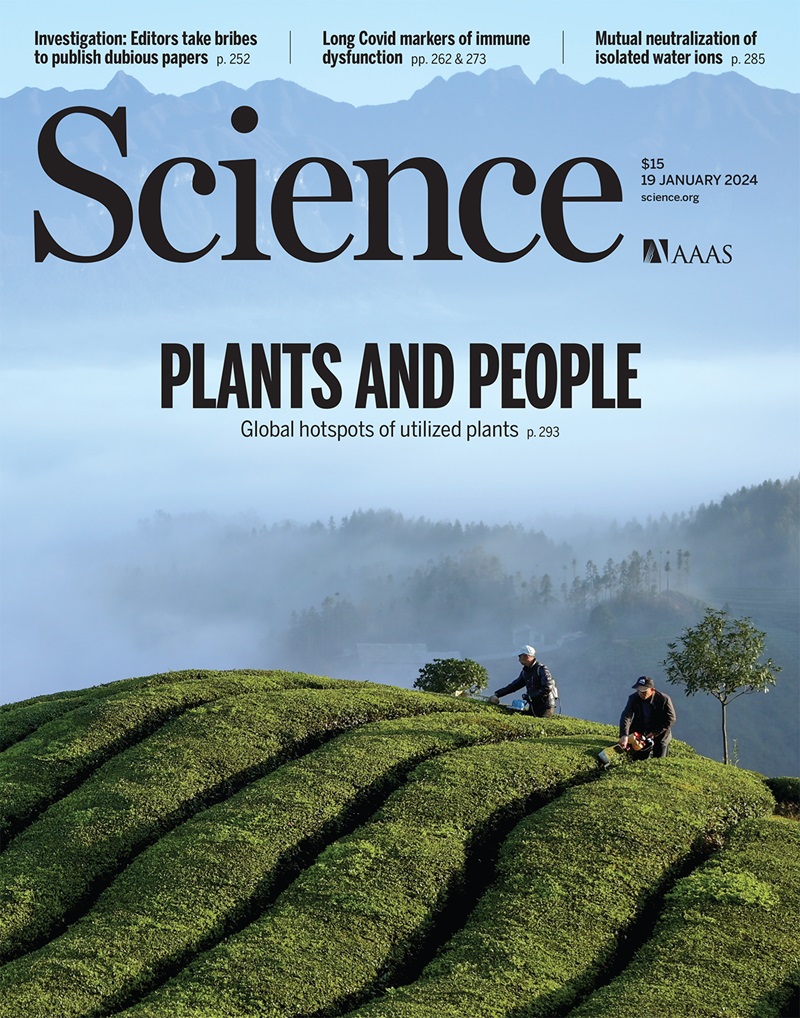Acoustic wave modulation of gap plasmon cavities
IF 45.8
1区 综合性期刊
Q1 MULTIDISCIPLINARY SCIENCES
引用次数: 0
Abstract
The important role of metallic nanostructures in nanophotonics will expand if ways to electrically manipulate their optical resonances at high speed can be identified. We capitalized on electrically driven surface acoustic waves and the extreme light concentration afforded by gap plasmons to achieve this goal. We placed gold nanoparticles in a particle-on-mirror configuration with a few-nanometer-thick, compressible polymer spacer. Surface acoustic waves were then used to tune light scattering at speeds approaching the gigahertz regime. We observed evidence that the surface acoustic waves produced mechanical deformations in the polymer and that ensuing nonlinear mechanical dynamics led to unexpectedly large levels of strain and spectral tuning. Our approach provides a design strategy for electrically driven dynamic metasurfaces and fundamental explorations of high-frequency, polymer dynamics in ultraconfined geometries.
间隙等离子体腔的声波调制
金属纳米结构在纳米光子学中的重要作用,如果能确定在高速下电操纵其光学共振的方法,将会扩大。我们利用电驱动的表面声波和间隙等离子体提供的极端光集中来实现这一目标。我们将金纳米粒子放置在一个带有几纳米厚的可压缩聚合物间隔层的镜面粒子结构中。然后,表面声波被用来调节接近千兆赫的速度下的光散射。我们观察到的证据表明,表面声波在聚合物中产生机械变形,随后的非线性机械动力学导致了意想不到的大水平应变和光谱调谐。我们的方法为电驱动的动态超表面提供了一种设计策略,并对超约束几何中的高频聚合物动力学进行了基础探索。
本文章由计算机程序翻译,如有差异,请以英文原文为准。
求助全文
约1分钟内获得全文
求助全文
来源期刊

Science
综合性期刊-综合性期刊
CiteScore
61.10
自引率
0.90%
发文量
0
审稿时长
2.1 months
期刊介绍:
Science is a leading outlet for scientific news, commentary, and cutting-edge research. Through its print and online incarnations, Science reaches an estimated worldwide readership of more than one million. Science’s authorship is global too, and its articles consistently rank among the world's most cited research.
Science serves as a forum for discussion of important issues related to the advancement of science by publishing material on which a consensus has been reached as well as including the presentation of minority or conflicting points of view. Accordingly, all articles published in Science—including editorials, news and comment, and book reviews—are signed and reflect the individual views of the authors and not official points of view adopted by AAAS or the institutions with which the authors are affiliated.
Science seeks to publish those papers that are most influential in their fields or across fields and that will significantly advance scientific understanding. Selected papers should present novel and broadly important data, syntheses, or concepts. They should merit recognition by the wider scientific community and general public provided by publication in Science, beyond that provided by specialty journals. Science welcomes submissions from all fields of science and from any source. The editors are committed to the prompt evaluation and publication of submitted papers while upholding high standards that support reproducibility of published research. Science is published weekly; selected papers are published online ahead of print.
 求助内容:
求助内容: 应助结果提醒方式:
应助结果提醒方式:


